Memo: JSRC is neither opposed to the existence of Yasukuni Jinja nor does it support the views of the group currently operating the shrine or Japanese nationalists. We felt that it would be useful to get a glimpse at why some people go visit the shrine and who those people are. We apologize if anecdotally shedding light on the cultural background offends you.
Yasukuni Shrine. 靖国神社.
靖 (Yasu) means “peaceful” “国” (Kuni) means “Nation”. “神社” (Jinja) means “Shrine.”
The Shrine of The Peaceful Nation. And it’s true, Japan is now a peaceful nation, but this shrine in which some of Japan’s war criminals are enshrined and which honors the war dead in general–this shrine is a perennial source of international and national conflict.
“There are three kinds of people who visit Yasukuni shrine every year on August 15th: There are the opponents to the controversial visit, the ultra nationalists and those who really come to greet the spirit of the dead.”
A visitor sitting on a bench aside the main alley on the way to Yasukuni Shrine, said this on the day officials of the Japanese government made their first visit to the shrine since the DPJ took power in 2009.
We tried to meet and understand who are the other people going.
In August, thousands of people visited the controversial shrine of Yasukuni to celebrate the 67th anniversary of the end of the Pacific War and the beginning of peace in Japan. Both interpretations were true.
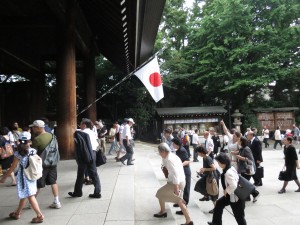
Yasukuni jinja, or the “shrine that pacifies the nation” is famous for honoring the war dead, but the political controversy starts at the point where convicted war criminals have also been enshrined in the same place: after being convicted and sentenced to death by the military tribunal of the Allied Forces, the spirits of more than a thousand Japanese war criminals, and later on 14 “class A” war criminals have been enshrined at Yasukuni in 1969 and in 1978.
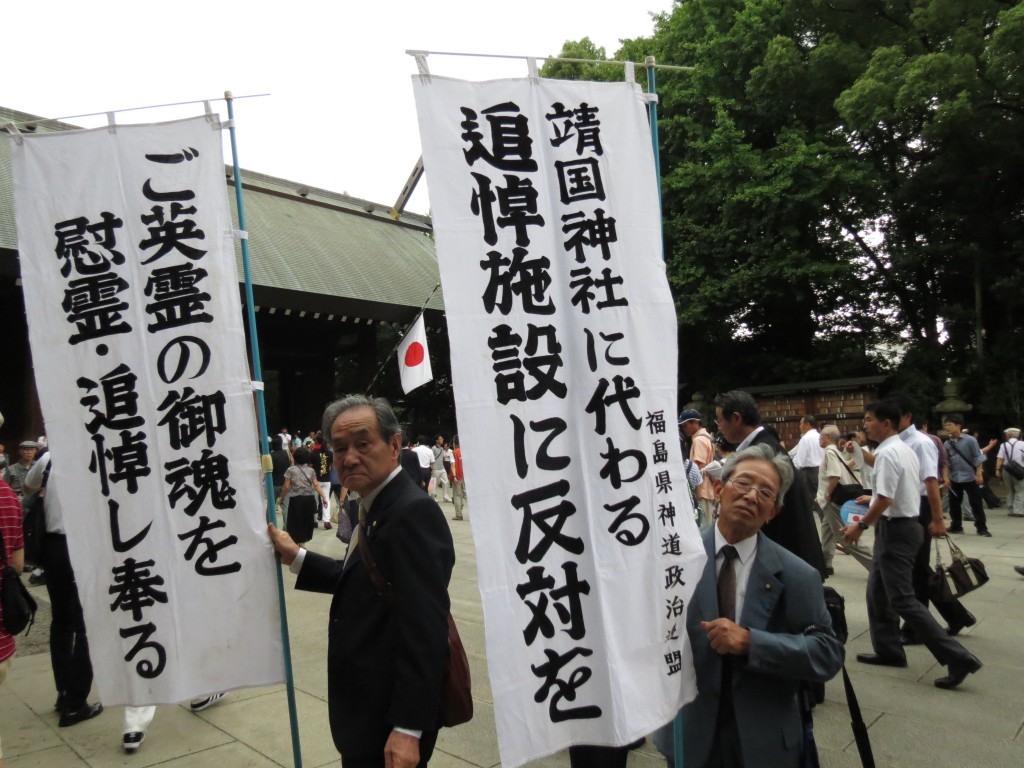
The visits made by a big number of Japanese politicians, including prime ministers have raised the concerns of the international community, especially the governments of China and Korea, which were invaded by Japan and view the Yasukuni shrine as the symbol of Japanese Militarism and a strong support for nationalism. The most widely reported visits in the media were those of Former Prime Minister Junichiro Koizumi (Liberal Democratic Party), in power from 2001 to 2006, who repeatedly visited the shrine on an official level.
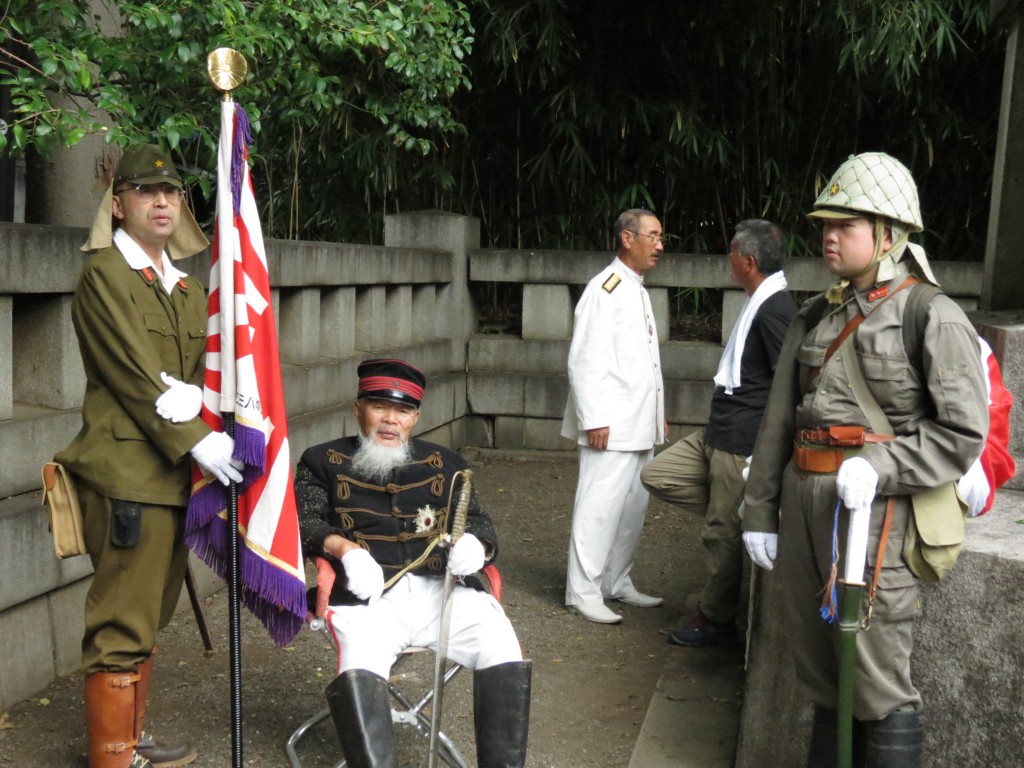
This year, the visits by Transport Minister Yuichiro Hata and State Minister in charge of North Korea’s abductions of Japanese Nationals Jin Matsubara, marks the first controversial visits by Democratic Party of Japan’s Cabinet members since they came in power in 2009, despite Prime Minister Yoshihiko Noda’s demand to his cabinet members “not to make an official visit” to the war heroes’ shrine. “The visits may be an indication that Prime Minister Yoshihiko Noda’s power is waning,” The Japan Times noted.
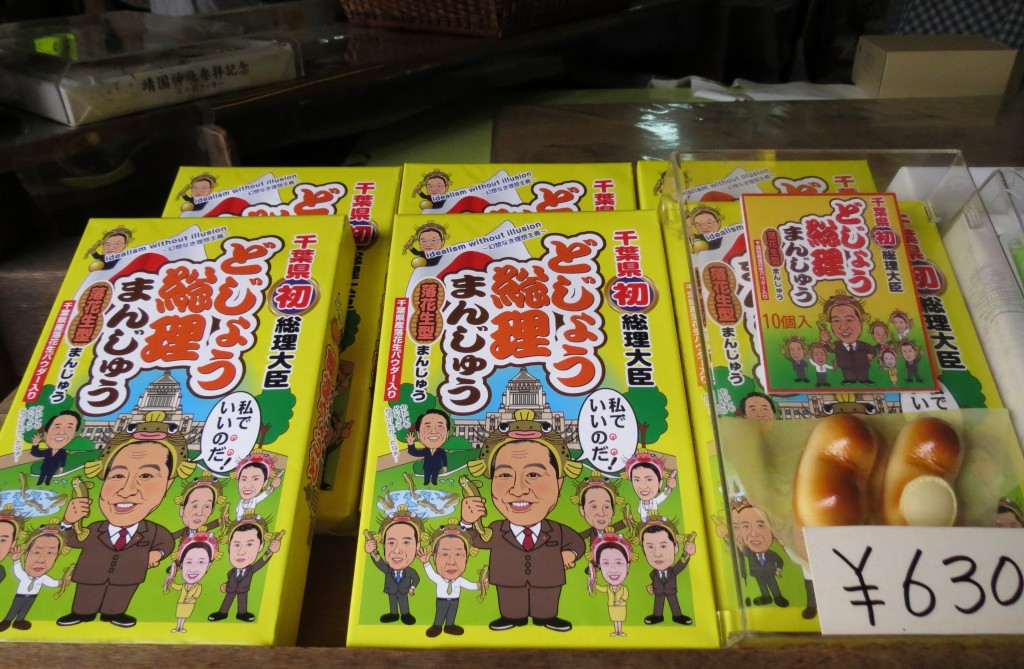
The visits made by the two Cabinet Members this Wednesday spark the diplomatic tensions already palpable after the official visit by the President of South Korea Lee Myung Bak to dispute the Takeshima islands claimed by Japan.
An official ceremony began under a white tent around 10:30 am with the broadcast of the Japanese national anthem and Emperor Hirohito’s speech broadcasted on national radio on August 15th 1945 to announce the end of the war and Japan’s defeat. Further down the road, closer to the shrine, white doves were thrown in the air and filled the blue sky.
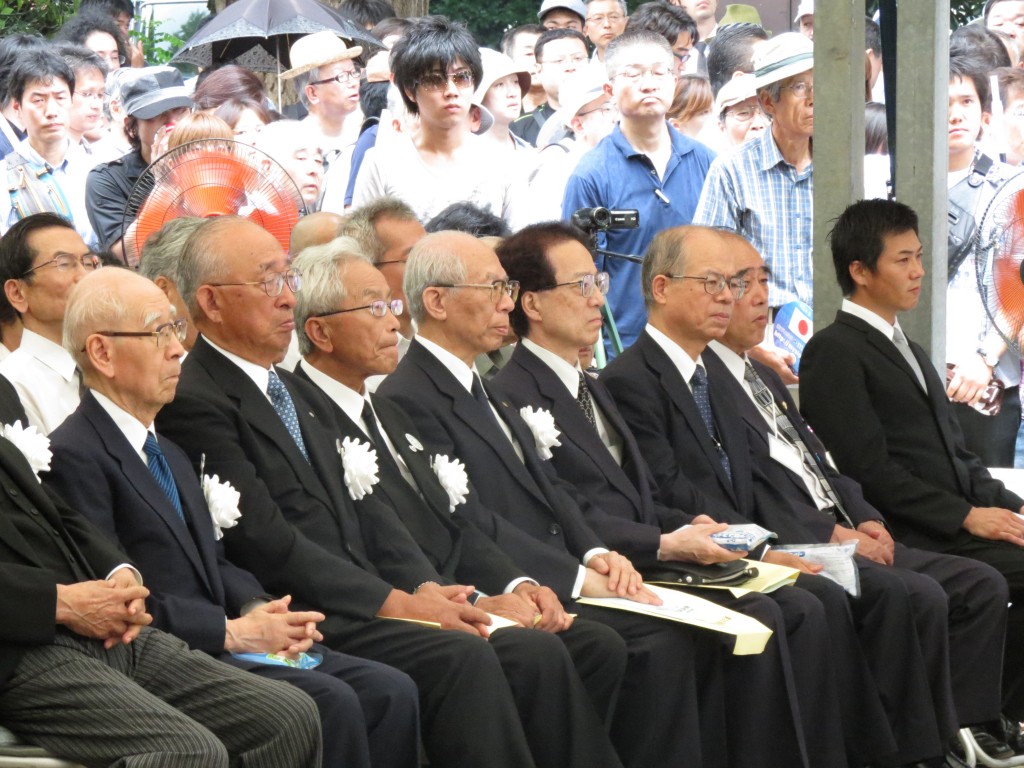
Back in the white tent, various guest speakers and old timers spoke about their experience of the war standing on a podium facing a number of senior citizens wearing the black outfits of mourners. At various occasions, a Japanese man in his fifties in the crowd screamed insanities about other Asian people, but the most disturbing things was that nobody around him reacted to his remarks. He was finally taken away by force from the tent by two men in black.
Two members of the parliament were also part of the ceremony: Mrs. Eriko Yamatani, known for her views on Japan’s territorial claims of the Tsushima Island, owned by 0.007 percent of Korean residents, and Former Prime Minister Shinzo Abe, in charge from 2006 to 2007, and current member of the House of Representatives, was part of the ceremony, visiting the shrine on an official level, unlike his 2006’s visit, which raised concerns from the Chinese and South Korean governments at the time. “Like all of you here, I was blessed with hearing the voice of the emperor 67 years ago. And we gave up our weapons and surrendered. And since that time, we have walked a long hard road.” He said during his speech, before disappearing in a car. It was hard to tell if he actually visited the shrine or not.
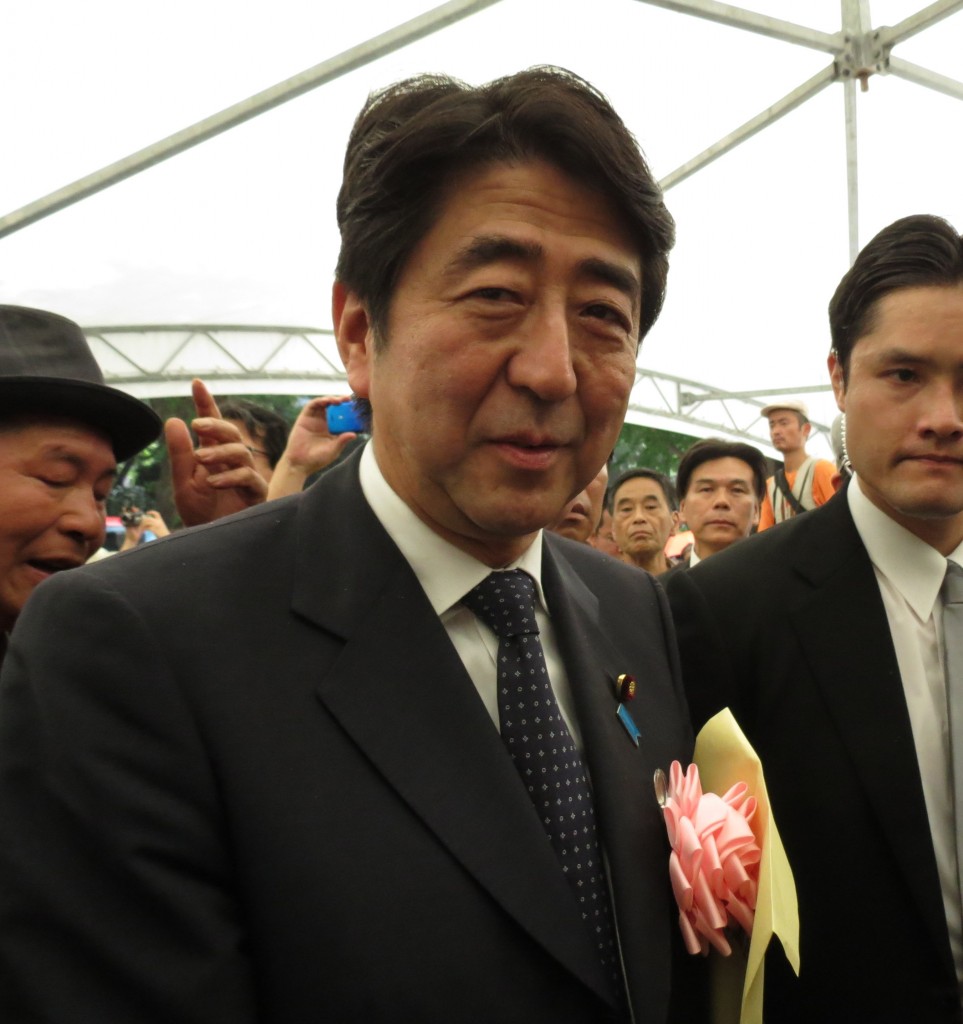
Under the shades of the old trees aligned along the way to the shrine, the grand son of deceased Tsuekichi Ishikawa is now 62 years’ old and sits on a tatami mat with two or three friends, eating odango rice and red beans sweets. His ancestor was a professional ranked soldier at the Yokosuka Navy. He is the current owner of a hundred years old imperial banner, which used to be carried by his grand father when he served in the Japanese Navy.
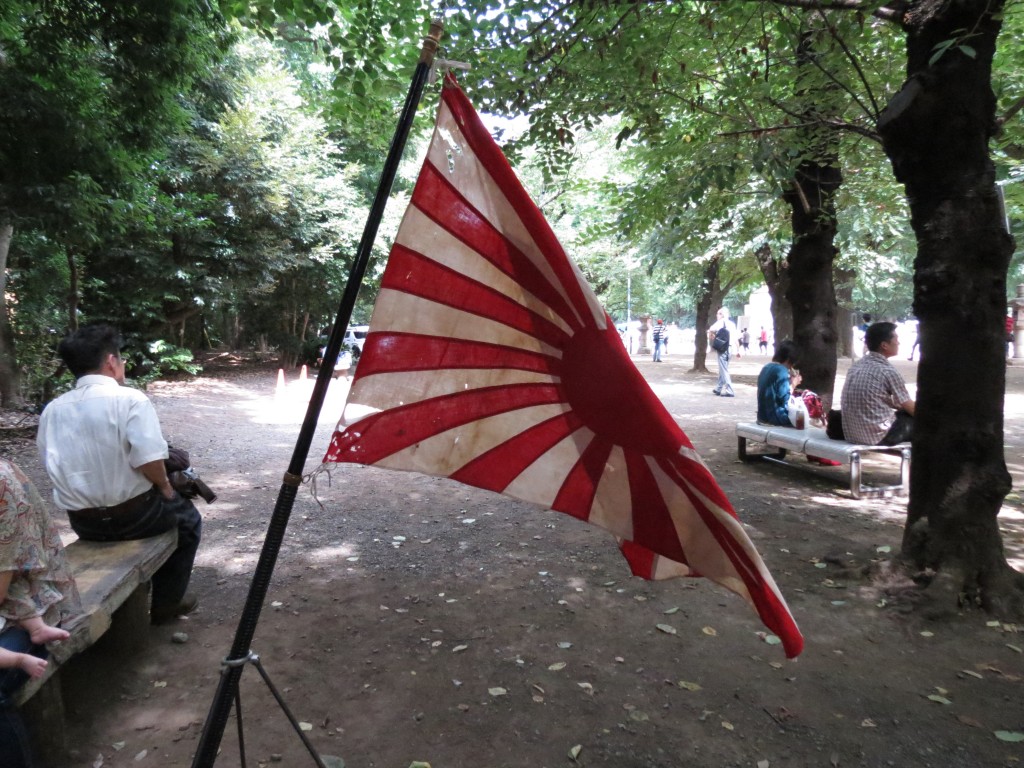
The grand son of deceased Captain Ishikawa was until recently the manager of pro wrestler Kozo Takeda, and he comes to Yasukuni shrine on August 15th, every year: “I come here to commemorate what people commonly refer as the ‘end of the war’, but in fact we can call it the ‘loss of the war,’ I think it makes more sense.” He said exhibiting a rare copy of the design layout of the famous battleship Yamato gunkan, which sank on April 7th, 1945 near Okinawa, where it was sent to protect the island from invasion by the American Navy and fought until destroyed.
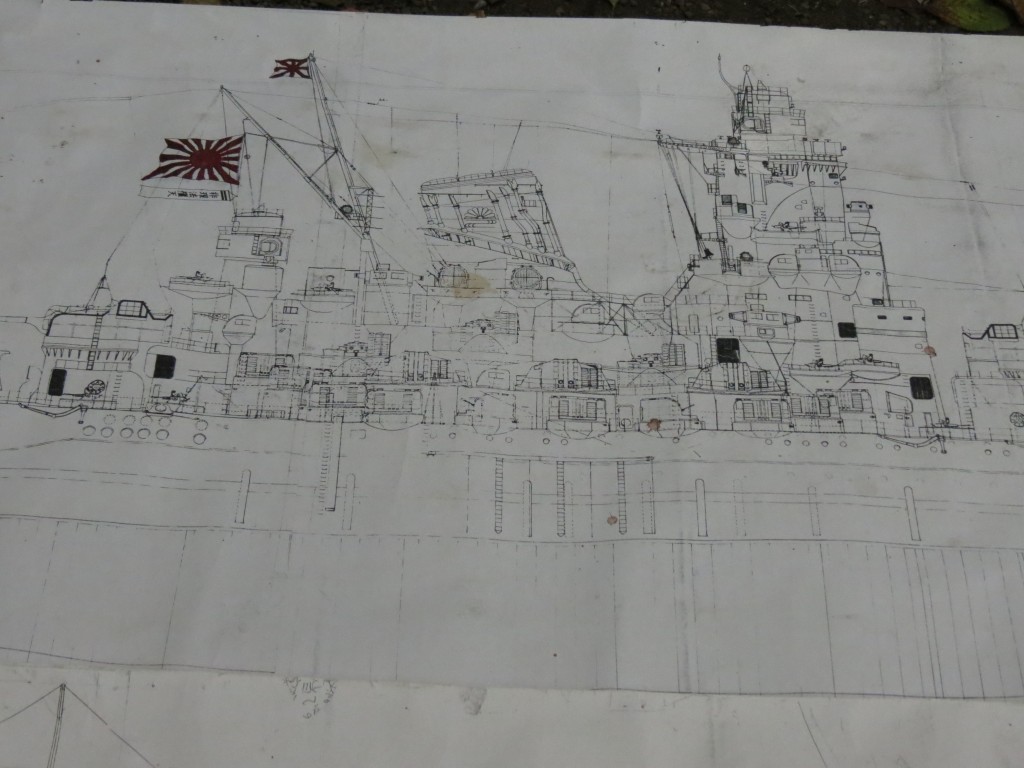
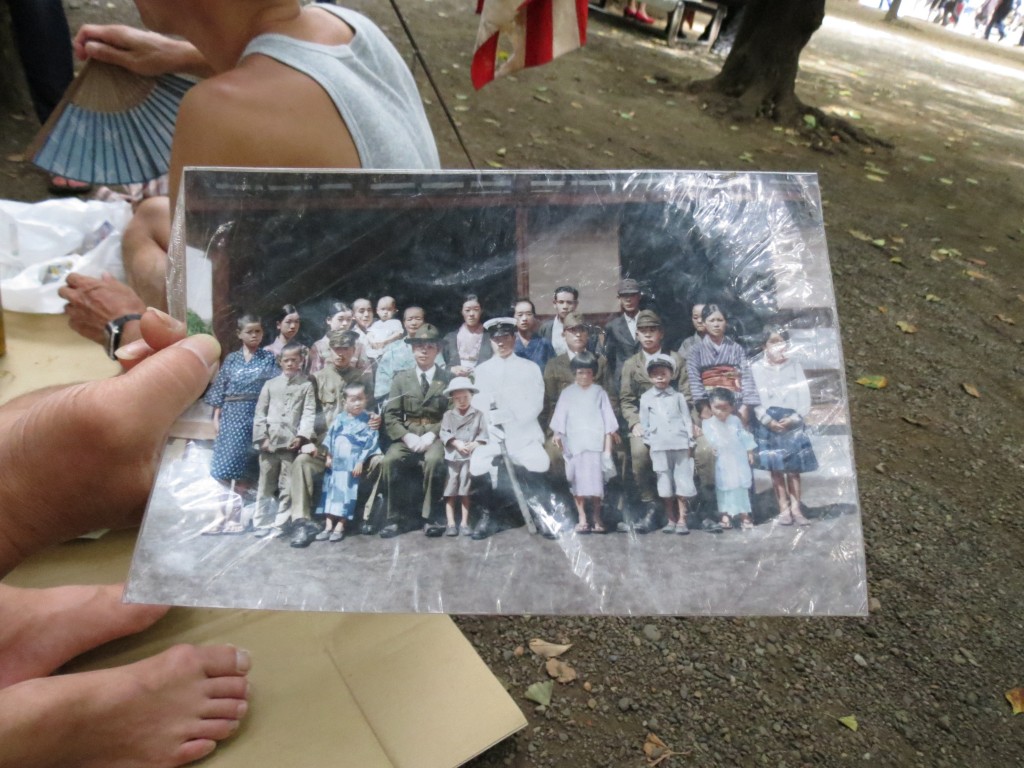
Kazuhiko Ikezoe (53) is a judo teacher, but he used to be a salary man at Honda: “Yasukuni is the place where the dead souls come to meet the living people. If you want to meet your ancestor, you can go to Yasukuni shrine, his bones may not be there, but it was decided that on August 15th, we can all meet up in Yasukuni shrine, living and dead ones. The souls meet up there. I came to visit the spirit of my uncle who died in the Philippines.” He explained.
At another corner of the shrine, a group of nostalgic elderly people gathered together in a circle, singing the war songs “Yokaren no uta” (song of the Japanese air force trainees) also known as “Wakawashi no uta” (song of the young eagles) on the background tunes of an old harmonica. It is a title song used in a propaganda film to recruit Japanese youth for the air force, the song came out in 1943.
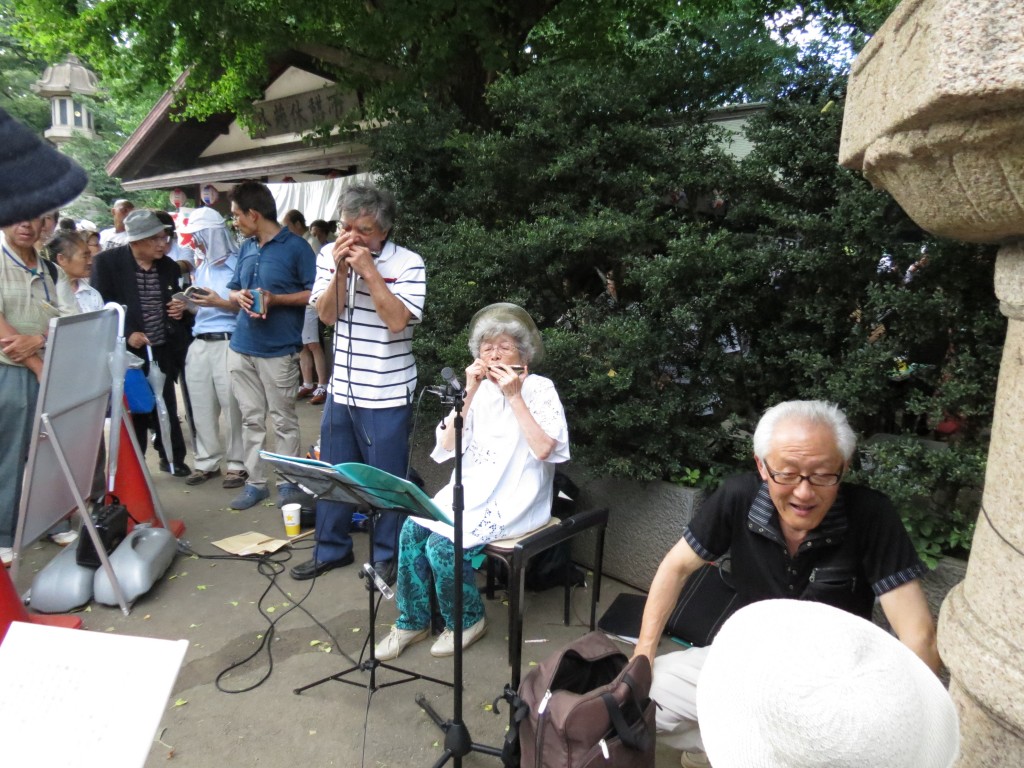
After the recent setbacks created by the South Korean president Lee Myung Bak’s request for his nation to receive “official apologies” from the Japanese emperor for the atrocities of the Japanese occupation, a reporter in his early thirties from a major Japanese newspaper investigating what the foreigners attending the memorial said that if he could express his personal views, he would say that “it is quite disturbing that the Korean president makes such official demand to the emperor of Japan.”
Japanese nationalism is not yet buried nor is it a ghost. Yasukuni Jinja symbolizes Japanese nationalism and Japan’s imperial hubris to many. What it symbolizes to those who visit it is very different from person to person.

Nice breakdown of what this place is all about.
Personally, I don’t think anybody is right or wrong. WWII, like all wars, is one big grey area if you look at it from a historical and moral perspective.
Erm. Laudable effort to go past the usual back and forth on the issue… Except… you had me at ‘entombed’…
These contentious class A war criminals are *enshrined*, definitely not entombed, at Yasukuni shrine (yes, there is quite a big difference).
Good point! I think the ashes were physically moved there so would “enshrined” and “entombed” work?
The Yasukuni Shrine is a Shinto shrine – no remains would be permitted.
Entombed is quite the wrong word. Names of those “enshrined” (and i am not even
sure that is the appropriate term) are written into books
You’re correct, thank you. “Enshrined” is indeed the government vernacular as well as the words that Yasukuni Shrine itself chooses. The Class A War Criminals were not “enshrined” with the spirits of other Japanese war dead until 1978 and then this was reported in the Asahi Newspaper on April 19th, 1979.
http://www.yasukuni.or.jp/english/about/index.html
http://www.mofa.go.jp/announce/press/2006/3/0309.html
http://www.mofa.go.jp/policy/postwar/yasukuni/position.html
[…] Yasukuni Shrine: The Nation’s Pacifying Shrine That Angers Other Nations : Japan Subculture Resear… – Memo: JSRC is neither opposed to the existence of Yasukuni Jinja nor does it support the views of the group currently operating the shrine or Japanese nationalists. We felt that it would be useful to get a glimpse at why some people go visit the shrine and who those people are. We apologize if anecdotally shedding light on the cultural background offends you. […]
Japan is a peaceful nation? Japan is a major arms maker, exporting weapons to people who kill Japanese journalists and others. Japan imprisons thousands of innocent, decent people who would become refugees or immigrants in other nations. These desperate souls have recently conducted a hunger strike to protest their horrid conditions, ignored by most media. Japan has deported more than 100,000 people, at their own expense, in recent years, often separating families. Japanese immigration officers murdered a man from Ghana who had been living with his Japanese wife for 22 years and working in Japanese companies. The Japanese state executes many people by capital punishment. Japanese bullying causes thousands to commit suicide, both young and old. Instead of attacking other nations, as during World War II, Japan is keeping its war mentality at home, and the death toll keeps rising.
Japan is a peaceful nation in the sense that it does not invade other countries and has not fought a war since the last one ended in 1945. “Peaceful” in the sense of “everyone living in peace and harmony”—well, except for Denmark, I’m not not aware of any country that is truly peaceful. Not even Disneyland.
Japan only recently relaxed the ban on arms exports that had been in place sine the 1970s.
http://www.defensenews.com/article/20111227/DEFSECT04/112270304/Japan-Eases-Long-Standing-Arms-Export-Ban
Japanese have been hawking weapons at arms conferences in Singapore and elsewhere for years. Japanese are also involved in making weapons in other countries, to skirt official “bans” on exports. As Jack Wow Idolstein has reported, the yakuza are major international arms dealers, and not all the recipients are man-children reading manga. Other gravy-train media don’t look into it because Japan is a convenient pit stop and aircraft carrier for the US military and thus a valuable ally allowed to get away with things done by less friendly countries such as NK, Iran and Russia. It’s likely Japan sends more weapons abroad than Russia. Those weapons kill civilians, like you, who don’t have the luxury of living in a sanitized society brainwashed by TV. It’s your choice: ignorance or awareness.
Just a few reports:
-http://www.japantimes.co.jp/text/ed20120902a1.html
Being Japanese in America, I have, over the years, come to accept certain generalizations about Japanese society and beliefs:
1. Some things are done because it is socially accepted. For things that have no lasting impact on the person, morality is superfluous. Visiting or praying at a shrine that happens to include war criminals could reflect myriad of other mindsets driven by hardcore nationalist philosophy, political expediency, or basic pride in having survived history.
2, Determining or even estimating the number of Japanese that share a certain mindset is impossible in a society in which secrecy is considered a mandatory part of life.
3. Asians are prejudiced against Asians. This is surprising to those who are unable to see races as part of tribalism.
4. Asians are especially prejudiced against Japan because of Japan’s history of repeatedly inflicting pain on it’s neighbors and valuing those who are not Japanese as something less than human.
5. The Asian idea of morality is drastically different from other cultures of the world.
6. The previous five observations apply to just about any large or lasting grouping of human beings on earth.
Well, good points. I think the motivations of people visiting the shrine are hard to generalize. Some people just go for the cherry blossoms.
More than the shrine itself, it’s the appending Yushukan Museum that bewildered me the most with its nationalistic stance and “None of it was our fault” view on WWII.